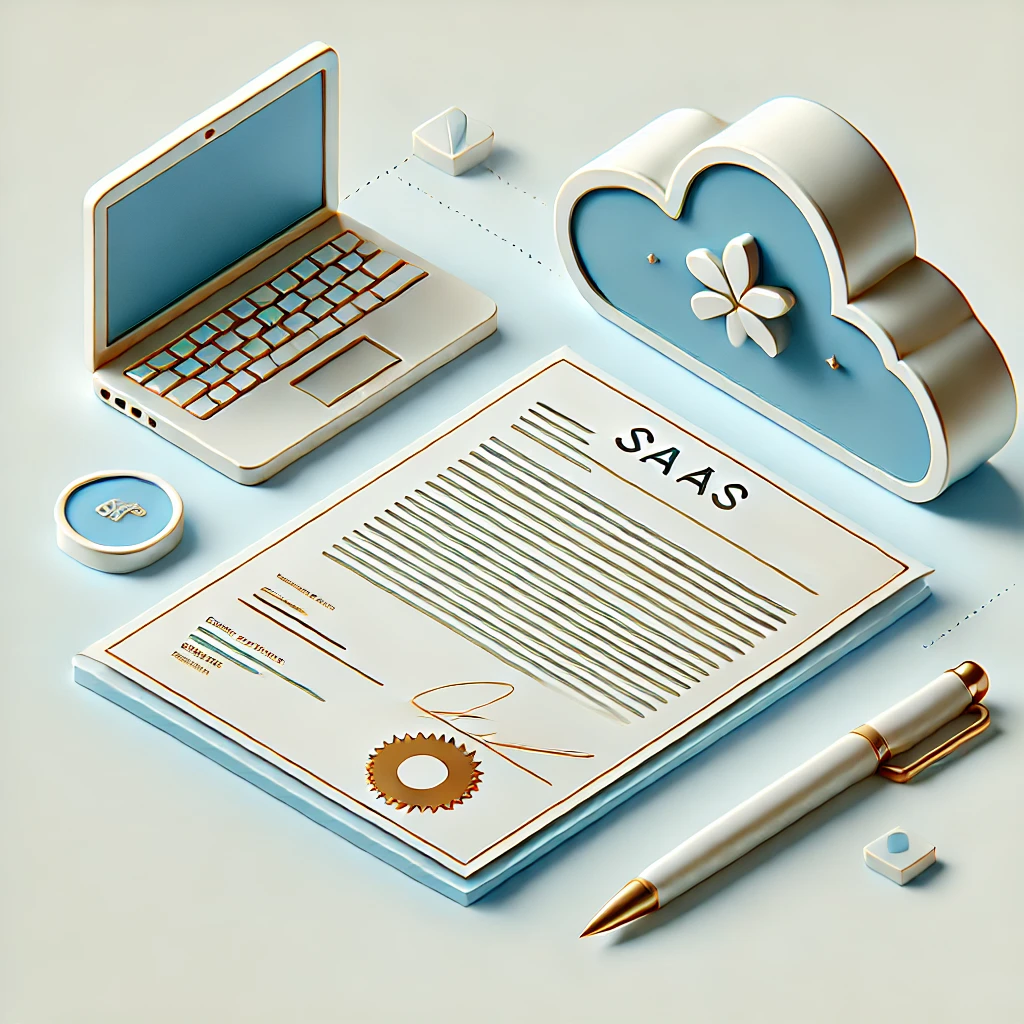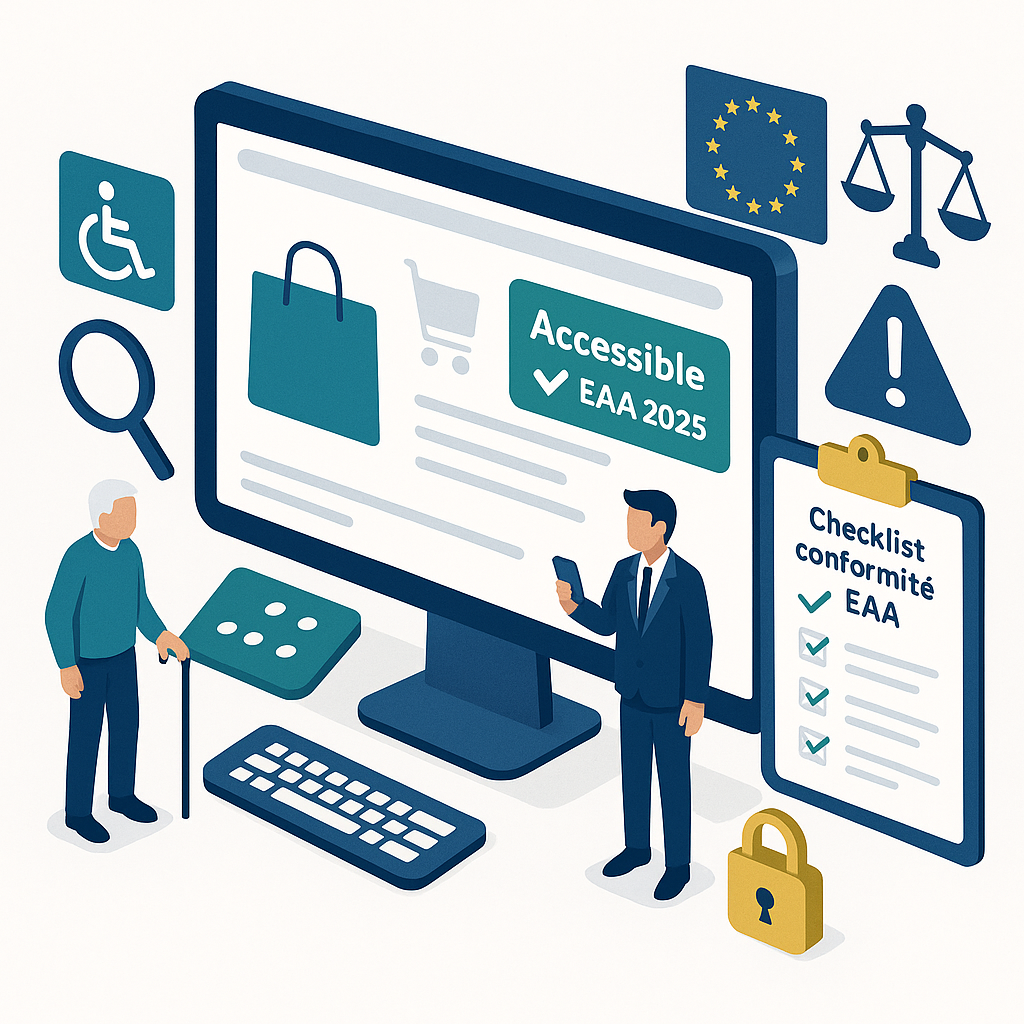Launching a B2B SaaS software solution requires rigorous legal preparation to protect the publisher's business and build trust with business customers. Whether you're a SaaS publisher looking to market your solution to businesses, or a fast-growing start-up, these four key legal documents are essential to ensure legal compliance and secure your business relationships.
Well-structured legal support can make all the difference between a successful project and a company exposed to legal risks.
- Terms of use
Legal notices are the legal foundation of any B2B SaaS solution. They enable customers to identify the publisher and understand its responsibilities, particularly in the event of a dispute.
Key elements to include :
- Publisher identification: Include company name, full address, RCS registration number and contact details (email, telephone). This information is mandatory to guarantee transparency for customers and to comply with French regulations.
- Liability: Detail the cases in which the publisher can be held liable, but also the exclusions, such as in cases of force majeure or misuse by the customer.
- Terms of use: Add a reminder of user rights and restrictions on access to the platform to avoid misunderstandings.
Penalties for non-compliance: Failure to comply with these obligations exposes the publisher to significant financial penalties and legal risks. For example, a fine of up to €75,000 may be imposed on non-compliant companies.
Case in point: a SaaS company that fails to specify its responsibilities in its legal disclaimer may find itself facing costly litigation with a customer who has suffered data loss. This underlines the importance of total transparency from the outset.
2. Privacy policy
The privacy policy is an essential document for any B2B SaaS publisher collecting data, whether from customers or end users. It provides information on data collection, storage and processing practices, while ensuring compliance with the RGPD.
Key elements to include :
- Data collected: Specify the types of data collected, such as connection information, technical data (IP, device identifiers), and identifying information (names, emails).
- Purpose of collection: Explain why this data is necessary (e.g. secure access, personalization, or usage analysis). Mention whether data is used for marketing purposes or passed on to third parties.
- Retention period: Specify how long the data will be kept, in line with best practice: subscription duration + 1 year for archiving, for example.
- User rights: Inform users of their rights of access, rectification and deletion, and how to exercise these rights.
RGPD penalties and risks: the RGPD imposes strict obligations on SaaS publishers. Failure to comply can result in penalties of up to 4% of the company's worldwide sales.
For example, a French SaaS company was recently sanctioned for failing to secure user data and properly inform customers of their rights.
Practical tip: A clear and comprehensive privacy policy not only reassures your customers, but also reinforces the confidence of their end-users.
3. Appendix RGPD (Data Processing Agreement - DPA)
The Data Processing Agreement (DPA) is an indispensable document for B2B SaaS publishers processing personal data for their customers. It clarifies the responsibilities of each party, particularly in the context of the RGPD, and protects both the publisher and the customer against legal risks.
Key elements to include in a PAD :
- Subcontracting and responsibility: Specify the respective roles: the customer is the data controller, and the publisher is the subcontractor. This distinction is crucial to avoid any ambiguity in the event of a CNIL inspection or security incident.
- Security measures: Detail the protocols in place: encryption, multi-factor authentication, regular backups, and access controls. These measures meet the requirements of the RGPD and reassure customers that their data is protected.
- Notification in the event of a data breach: specify the notification period (generally 72 hours under the RGPD) and the steps to be taken. This transparency is essential to limit damage in the event of an incident.
Risks and penalties in the event of non-compliance: A poorly drafted or non-existent DPA can expose the publisher to heavy penalties in the event of a data leak or RGPD inspection.
For example, a SaaS company that failed to integrate a compliant DPA was held accountable to its customers after a cyber attack, suffering financial losses and reputational damage.
Practical tip: Including a detailed DPA in your SaaS contracts shows your commitment to data protection and reassures your business customers of your RGPD compliance.
4. SaaS contract
The SaaS contract formalizes the commercial relationship between the publisher and the customer. It defines the responsibilities of both parties, the conditions of use, and the guarantees offered, while providing legal security for transactions.
Essential elements to include in a SaaS contract :
- User rights: Clearly define customer access rights (for example, by number of users or type of access). Also include restrictions, such as a prohibition on reselling or sublicensing access to the software.
- Service Level Agreements (SLAs): Specify availability commitments (e.g. 99.9% annual availability), response times in the event of incidents, and support arrangements (24/7 or business hours). These clauses are crucial to reassure customers and provide a framework for your obligations.
- Liability clauses: Limit your liability in the event of failure, data loss or service interruption. Explicitly mention exclusions, such as force majeure (cyber attacks, natural disasters).
- Reversibility clause: guarantee that the customer's data will be retrieved at the end of the contract, in a usable format (e.g. CSV or XML). Also specify the terms and conditions, such as deadlines and any costs associated with migration.
Case in point: A SaaS vendor won a tender thanks to a clear contract with detailed SLAs and a full reversibility clause. This reinforced the customer's confidence in the reliability and flexibility of the service.
Practical tip: A well-written SaaS contract not only protects the publisher, but also serves as a sales argument to convince your prospects and secure your long-term relationships.
***
Protecting your B2B SaaS business requires rigorous legal preparation and documents tailored to your needs. The legal disclaimer, privacy policy, DPA and SaaS contract are not just legal obligations: they are essential tools for securing your business and strengthening the trust of your business customers.
Don't wait for a dispute or RGPD inspection to jeopardize your business. Contact a legal expert for a complete audit of your documents or to help you draft them.
We've helped more than 10 SaaS publishers secure their business with compliant contracts and documents tailored to their needs.
➡️ Contact us today to ensure the compliance and legal security of your B2B SaaS software.




